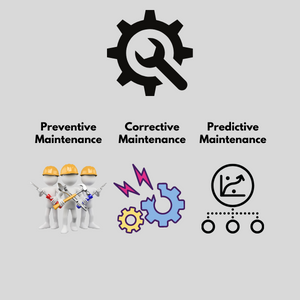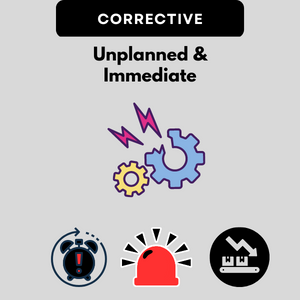Pharmaceutical equipment maintenance is necessary to keep the pharma equipment in working condition and enables a pharma organization to deliver its product on time.
Pharmaceutical equipment can make or break the entire pharma production process, and every pharma manufacturer is responsible for keeping pharmaceutical equipment in optimum working condition.
There are many ways and strategies to keep pharmaceutical equipment in running condition – the most critical being equipment maintenance. It uses various tools, resources, and techniques to keep the equipment free from errors and faults. Lack of adequate maintenance can result in a breakdown, poor product characteristics, regulatory non-compliance, and loss of market share.
Importance of Pharmaceutical equipment maintenance
Let’s discuss the importance of pharmaceutical equipment maintenance and how it enables a pharma manufacturer to deliver quality products.
- Maintenance keeps the equipment in running condition at all times, enabling it to complete production as per market demand. Machine breakdown can become critical if there is an urgent need for a product that cannot be turned down.
- It helps to protect equipment from the adverse effect of pharma-active pharmaceutical ingredients – API. They are highly reactive and become hazardous for different components, such as mechanical and electrical. Maintenance monitors these effects and rectifies them before API intensifies its effect.
- It helps to protect equipment from environmental effects because pharma manufacturing requires specialized ecological conditions such as low temperature and humidity. These environmental conditions can alter the equipment’s characteristics and work. Maintenance helps monitor and resolve these effects as soon as they occur.
- Maintenance helps to resolve problems, issues, and breakdowns before they intensify at a large scale. It helps detect the problem initially, significantly saving downtime, cost, and resources.
- The experienced gained from maintenance helps devise a plan and strategy for installing new equipment. Considering the lessons learned during equipment maintenance helps form user requirements that address the organization’s concerns and pain points.
Planning for Pharmaceutical equipment maintenance
Let’s discuss some best practices for the planning of pharmaceutical equipment. maintenance
Always include the manufacturer’s recommendation.
The manufacturer’s recommendation is an essential source of information for planning maintenance activities. Almost all equipment manufacturers provide maintenance procedures, schedules, and checklists for their equipment, which is often mentioned in either a separate or an operating manual.
The manual provides valuable information, such as
- When to perform maintenance
- What errors need specific attention
- What checklist to be followed
Use your personal experience to optimize the maintenance plan
Personal experience is a great way to devise and plan maintenance activities. Use your experience gained over time to determine machine pain points and device maintenance strategies accurately. Personal experience can be a great way to determine if
- Maintenance checklists are sufficient or need updating
- Maintenance procedures fulfill the maintenance purpose
- Maintenance schedule and frequency are according to the equipment’s requirement.
Regulatory recommendations are necessary.
Regulatory bodies such as United States FDA also guide equipment maintenance. The pharmaceutical manufacturers must follow this recommendation; otherwise, respective regulatory bodies will fine or shut down their operations.
Always consider how equipment is being used.
Equipment usage sets the baseline for future maintenance strategies. Data such as operating frequency, speed, and product give valuable information about the equipment’s current status. Use these data points to visualize the current equipment condition and plan maintenance accordingly.
The following tips can be helpful if the equipment is used more often than usual.
- Increase the maintenance frequency.
- Update the maintenance checklist, and include breakdown or condition-based checks.
- Use the latest tools and equipment such as thermal imager.
Know your equipment history.
Equipment’s historical trend gives an insight into the equipment’s future performance and working. It also helps to indicate the future breakdown, degraded performance, and drift in output product characteristics.
When planning equipment maintenance, always consider equipment history and pay attention to any.
- Significant faults that occurred
- Change in the output product specification
- Unexpected breakdown
What are some common pharmaceutical equipment maintenance strategies to choose from?
Let’s discuss some common maintenance strategies for minimizing equipment downtime.

Corrective Maintenance
Corrective maintenance rectifies the fault in the running equipment, which needs immediate rectification. The system cannot run without rectifying the fault and can result in a compromised output product.

Corrective maintenance is the reactive type that needs attention whenever needed. It cannot be predicted or planned. The personnel for corrective maintenance should always be present with relevant tools, accessories, and resources.
Personnel immediately conduct corrective maintenance if equipment breaks down due to faulty parts. If the fault does not affect the machine working or any critical system, it can be planned for the future, considering the equipment availability and process requirement. In both cases, corrective comes into action after the occurrence of a fault.
Preventive maintenance
Preventive maintenance is performed to prevent any faults that could occur in the future before equipment goes into a breakdown. Every component, system, accessory, and auxiliaries is checked for potential faults. If personnel finds out any source of the possible fault, it is replaced or rectified.

Preventive maintenance follows a schedule often monthly, quarterly or yearly. The schedule depends upon the equipment usage and history.
After preventive maintenance, the maintenance personnel completes its documentation, consisting of a checklist and verification that the machine is handled to the production department in running condition.
Predictive maintenance
Predictive maintenance predicts fault in a machine, component, or accessory by collecting performance data of different parts or components. The software analyzes the collected data and determines the current state of the equipment. If the performance degrades below a threshold value, it triggers a signal for maintenance for that particular component or part.

There are two primary components of predictive maintenance – condition monitoring and software analytics.
Condition Monitoring
Condition monitoring refers to various sensors for measuring equipment’s performance. It continuously monitors multiple components and accessories and sends this data to the software for analysis. Examples include vibration sensor oil analysis.
The vibration sensor measures the vibration of any attached component or assembly. It can be installed on the motor or coupling to detect abnormal vibrations. If the vibration sensor detects greater than usual vibration, it is perceived as a fault.
Oil analysis is used to analyze oil’s condition. Any change in the oil characteristics or presence of foreign bodies represents a problem perceived as a fault.
Software analytics
Software analytics uses data collected from condition monitoring sensors and consists of various algorithms. It creates a historical trend of the collected data and applies the algorithm. Based on historical and current status, the software predicts fault before it occurs.

